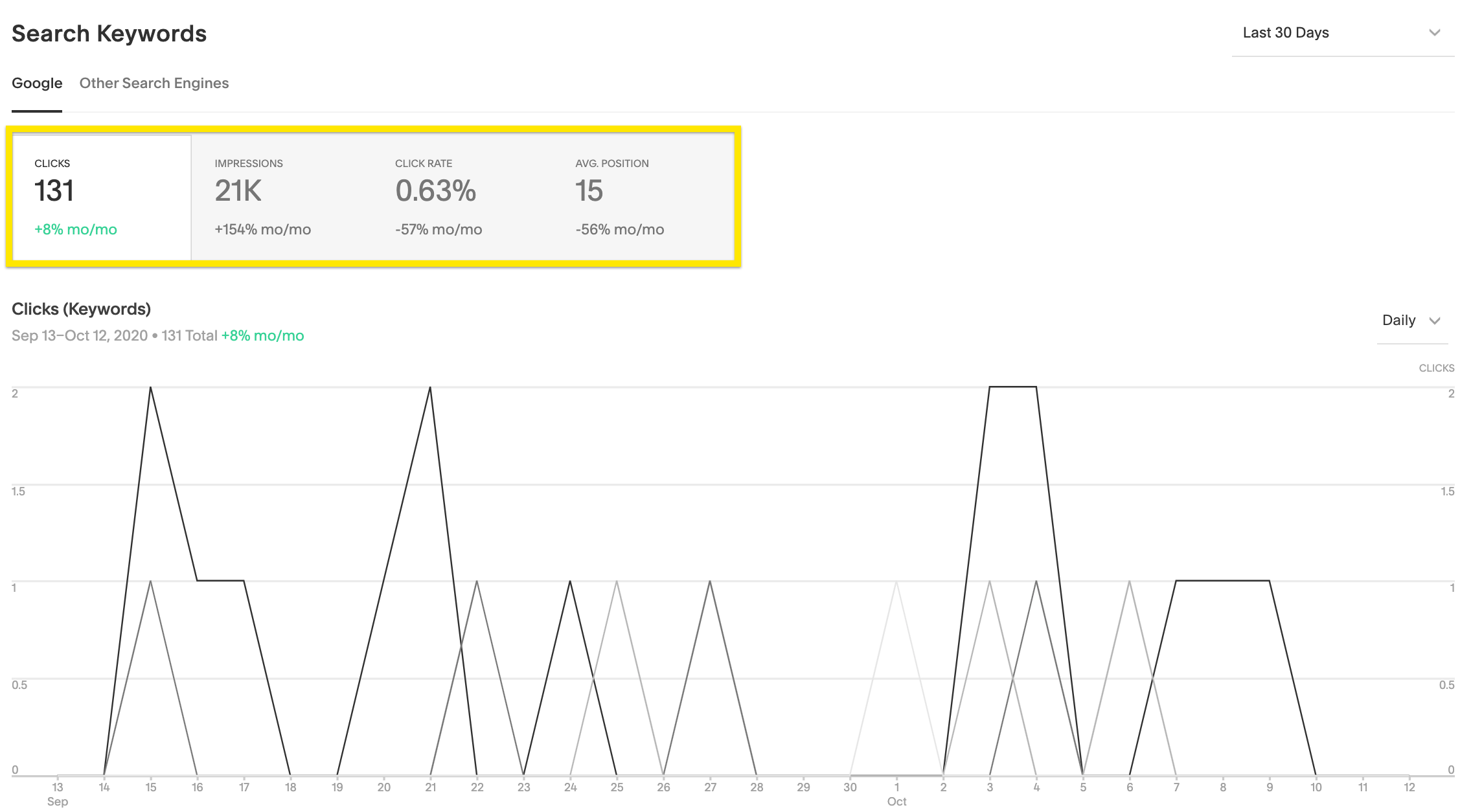
Analyzing Search Keywords: A Guide to Your Site's Traffic Analytics
Search keywords analytics help you understand what terms drive traffic to your site from search engines. This data is crucial for optimizing your content and improving search visibility.
Google Search Keywords
To view Google search data:
- Access Analytics panel > Traffic > Search keywords
- Verify your site with Google Search Console (allow 72 hours for data population)
- Select desired date range (data available from January 2014)

Search Keywords trend graph
Key Performance Indicators (KPIs):
- Total clicks: Number of clicks from specific keyword searches
- Total impressions: Number of times your site appeared in search results
- Avg. click through rate: Percentage of impressions resulting in clicks
- Avg. position: Your site's average ranking position for keywords
The Keywords Table shows:
- Search keywords
- Clicks (with percentage of overall clicks)
- Impressions
- Click through percentage
- Average position
Other Search Engines
The Other Search Engines tab displays:
- Traffic from engines like Bing and DuckDuckGo
- Keyword count and usage
- "Not provided" data for secure searches
- Searches up to 80 characters
Using Keyword Data Effectively:
- Identify improvement opportunities:
- Analyze high-impression, low-click-rate keywords
- Focus on improving average position for valuable keywords
- Incorporate successful keywords naturally into content
- Optimize popular content:
- Add relevant keywords to product descriptions
- Connect search terms with purchasing patterns
- Maintain SEO best practices
- Expand search engine verification:
- Consider verifying with additional search engines
- Use Bing Webmaster tools for broader insights
Note: For discrepancies between Google Search Console and Squarespace data, allow up to 72 hours for synchronization before contacting support.
Related Articles

Google Search Results Showing Outdated Information: How to Fix

